2020 sollte mein großes Reisejahr zu vielen
geschichtsrelevanten Adressen werden. Der Grund dafür war banal.
Es gab einige runde Jahrestage, die mich hoffen ließen, dass auch vor Ort entsprechende Veranstaltungen zu erwarten wären.
Highlight sollte die Reenactmenveranstaltung Bila Hora werden, die für Ende 2020 in der Nähe von Prag geplant war, und die an den 400. Jahrestag der Schlacht am Weißen Berg erinnern sollte.
Aber davor gab es Ziele, die von meinem Wohnort betrachtet sehr schnell zu erreichen sind.
Denn, es gab ja auch noch den 150. Jahrestag des Deutsch Französischen Krieges von 1870, ein Datum, dass ich nutzen wollte, um mal nach Woerth, Froeschwiller, vielleicht auch Sedan zu fahren.
Außerdem jährte sich zum 80. Mal der Jahrestag des Angriffs auf Frankreich im Jahr 1940, und da wollte ich einen Kurzabstecher ins Elsaß und nach Lothringen machen, um hier ein paar Werke der Maginotlinie zu besuchen. Ein Katzensprung von meinem Wohnort aus.
Was kam, war Corona, und damit zerschlug sich diese Planung.
Vorige Woche konnte ich dann allerdings wenigstens einen dieser Pläne nachholen.
Ich fuhr ins Elsaß, genauer gesagt zum Fort de Schoenenbourg, einem Artilleriewerk der Maginotlinie.
Es gab einige runde Jahrestage, die mich hoffen ließen, dass auch vor Ort entsprechende Veranstaltungen zu erwarten wären.
Highlight sollte die Reenactmenveranstaltung Bila Hora werden, die für Ende 2020 in der Nähe von Prag geplant war, und die an den 400. Jahrestag der Schlacht am Weißen Berg erinnern sollte.
Aber davor gab es Ziele, die von meinem Wohnort betrachtet sehr schnell zu erreichen sind.
Denn, es gab ja auch noch den 150. Jahrestag des Deutsch Französischen Krieges von 1870, ein Datum, dass ich nutzen wollte, um mal nach Woerth, Froeschwiller, vielleicht auch Sedan zu fahren.
Außerdem jährte sich zum 80. Mal der Jahrestag des Angriffs auf Frankreich im Jahr 1940, und da wollte ich einen Kurzabstecher ins Elsaß und nach Lothringen machen, um hier ein paar Werke der Maginotlinie zu besuchen. Ein Katzensprung von meinem Wohnort aus.
Was kam, war Corona, und damit zerschlug sich diese Planung.
Vorige Woche konnte ich dann allerdings wenigstens einen dieser Pläne nachholen.
Ich fuhr ins Elsaß, genauer gesagt zum Fort de Schoenenbourg, einem Artilleriewerk der Maginotlinie.
Für mich gehört das Fort zu den „Fab‘ Four“ der Maginotlinie, die der interessierte Tourist auf jeden Fall besuchen sollte.
Die drei weiteren sind der Simserhof – über diesen hatte ich an dieser Stelle hier berichtet
-, dann das größte Werk der Maginotlinie,
das Fort Hackenberg, und das Fort Four à Chaux (Fort Kalkofen), das durch seinen
elektrischen Schrägaufzug bekannt ist, über den Munition und Versorgungsgüter
von den unteren Ebenen nach oben transportiert wurden (Das Fort Four à Chaux und
das Fort de Schoenenbourg liegen übrigens fast unmittelbar nebeneinander. Hier
kann man also eine Besichtigung miteinander verbinden).
Ein Besuch bedeutet jetzt für mich keinen größeren Aufwand. Die Werke im Elsaß erreiche ich in 1,5h Fahrzeit, zum Fort Hackenberg sind es 200 km, also auch kein Problem.
Wenn Sie sich zum Spezialisten der Maginotlinie weiterentwickeln wollen, dann nehmen Sie doch bitte noch die folgenden Werke mit:
Fort Michelsberg (Artilleriewerk in der Nähe von Fort Hackenberg) und Fort Casso (Infanteriewerk in der Nähe vom Simserhof). Auch hier ergibt sich also die Kombination eines Besuchs von zwei Werken.
Am äußersten nordwestlichen Ende der Maginotlinie, im Festungsabschnitt Montmédy (Nähe Sedan), empfiehlt sich noch die Besichtigung des kleinen Infanteriewerks La Ferté, weil um dieses auch tatsächlich gekämpft wurde.
Wenn Sie sich also vorher ein paar Gedanken machen, können Sie sich schöne Touren zusammenstellen.
Am besten übernachten Sie irgendwo in einem der malerischen Orte des Elsaß, gehen morgens in einen Bunker, nachmittags wandern Sie zu einer Burg, einer Burgruine oder zu einer Vauban Festung und abends kehren Sie in einem gemütlichen Lokal oder Weingut ein. So lernen Sie das Elsaß aus unterschiedlichen Blickwinkeln kennen, und glauben Sie mir. Es lohnt sich.
Zurück zum Fort de Schoenenbourg.
Sie erreichen das Fort ohne Probleme mit dem Auto. Der Weg ist sehr gut beschildert, wenn das auch heute in Zeiten von GPS ja nicht mehr unbedingt notwendig ist.
Wenn Sie übrigens eher wanderfaul sind, merken Sie sich bitte folgendes.
Ein Besuch bedeutet jetzt für mich keinen größeren Aufwand. Die Werke im Elsaß erreiche ich in 1,5h Fahrzeit, zum Fort Hackenberg sind es 200 km, also auch kein Problem.
Wenn Sie sich zum Spezialisten der Maginotlinie weiterentwickeln wollen, dann nehmen Sie doch bitte noch die folgenden Werke mit:
Fort Michelsberg (Artilleriewerk in der Nähe von Fort Hackenberg) und Fort Casso (Infanteriewerk in der Nähe vom Simserhof). Auch hier ergibt sich also die Kombination eines Besuchs von zwei Werken.
Am äußersten nordwestlichen Ende der Maginotlinie, im Festungsabschnitt Montmédy (Nähe Sedan), empfiehlt sich noch die Besichtigung des kleinen Infanteriewerks La Ferté, weil um dieses auch tatsächlich gekämpft wurde.
Wenn Sie sich also vorher ein paar Gedanken machen, können Sie sich schöne Touren zusammenstellen.
Am besten übernachten Sie irgendwo in einem der malerischen Orte des Elsaß, gehen morgens in einen Bunker, nachmittags wandern Sie zu einer Burg, einer Burgruine oder zu einer Vauban Festung und abends kehren Sie in einem gemütlichen Lokal oder Weingut ein. So lernen Sie das Elsaß aus unterschiedlichen Blickwinkeln kennen, und glauben Sie mir. Es lohnt sich.
Zurück zum Fort de Schoenenbourg.
Sie erreichen das Fort ohne Probleme mit dem Auto. Der Weg ist sehr gut beschildert, wenn das auch heute in Zeiten von GPS ja nicht mehr unbedingt notwendig ist.
Wenn Sie übrigens eher wanderfaul sind, merken Sie sich bitte folgendes.
Die Geschütztürme finden sich „im freien Feld“ quasi am Kopfende der Anlage. Hierhin führt auch ein entsprechender Wanderweg, wenn sie am Museumseingang den Weg links um die Anlage herum wählen.
Sie können aber auch direkt dorthin fahren.
Wenn Sie aus Richtung Wissembourg kommen, durchfahren Sie nämlich kurz vor ihrem Ziel einen Kreisel.
Dort nehmen sie die erste Ausfahrt (ausgeschildert) und nach wenigen Metern sehen sie direkt vor sich einen kleinen Parkplatz, der am Fuß der Anlage liegt. Hier können Sie sich dann die verschiedenen Kampfkuppeln von außen anschauen.
Danach fahren sie zum Museumseingang, der – aus der Vogelperspektive betrachtet – ja am anderen Ende liegt.
Sie betreten die Anlage quasi an der Hinterseite (feindabgewandte Seite) über den ehemaligen Eingang, der für die Anlieferung von Versorgungsgütern und Munition vorgesehen war.
In unmittelbarer Nähe davon (sie gehen ca. 300 Meter nach
rechts) finden Sie den ehemaligen Eingang der direkt zu der unterirdischen
Kaserne führte. Dieser ist heute verschlossen, aber keine Sorge, die unterirdischen
Räume sehen Sie während Ihres Besuches.
Nach erfolgter Bezahlung des Eintritts und kurzer Einweisung durch einen sehr freundlichen Mitarbeiter des Museums machten wir uns auf den Weg.
So ungefähr wussten wir was uns erwartete.
Mehrere Kilometer zu Fuß durch diese unterirdische Anlage, die eine konstante Temperatur von 12 Grad aufweist.
Der Rundgang im Fort de Schoenenbourg ist in vier große
Abschnitte unterteilt.
Station 1: Küche-Kraftwerk
Station 2: Kaserne-Krankenstation
Station 3: Kommandozentrale
Station 4: Kampfbunker
Der Weg ist perfekt ausgeschildert.
Station 1: Küche-Kraftwerk
Station 2: Kaserne-Krankenstation
Station 3: Kommandozentrale
Station 4: Kampfbunker
Der Weg ist perfekt ausgeschildert.
Man muss dann auch bei Station 1 beginnen und den Wegweisern folgen, damit man alles sieht.
Hier einmal eine Übersichtskarte der unterirdischen Festung.
Wenn Sie schon einmal eine solche Anlage besucht haben, kennen Sie die langen Gänge.
Auch die Bahntrassen dürften ihnen bekannt sein.
Hier verkehrte die unterirdische elektrische Kleinbahn mit der Versorgungsgüter und Munition transportiert wurden.
An Wegkreuzungen finden sich dann auch hier unten MG Scharten, die im Ernstfall zur Bekämpfung eines infiltrierten Feindes gedient hätten.
Im hinteren Teil der Anlage, finden sich in die Wände des Ganges eingelassene Sprengkammern, die im äußersten Notfall gezündet werden sollten, um ein weiteres Vordringen des Feindes zu verhindern.
Kommen wir zu den Bildern.
Stationen 1und 2:
Küche/Kapelle
Schlosserei/Brandbekämpfung/Filteranlage/Kraftwerk
Um diese Erfahrung besser verstehen zu können, empfehle ich Ihnen die Lektüre meiner beiden Berichte zu den Kämpfen um Fort Vaux und Fort Douaumont bei Verdun.
Geschichte als Hobby: Sehen - Lesen - Spielen: Fort Vaux - Verdun 1916 (thrifles.blogspot.com)
Unteroffiziersräume
Mannschaftsräume
Desinfektionsraum
Diverse Räume- Büro, Funkräume, Kommandozentrale
Zu einem der Kampfräume gelangt man über einen großen Schacht, der nach oben führt.
Hier kann man die hydraulische Anlage besichtigen mit der die Kampfkuppel angehoben und gesenkt werden konnte.
Zur Kanone selbst kommt man dabei nicht. Diese sieht man in ein paar Meter Höhe in der Kuppel.
Anbei Screenshots aus einem Film, der die Funktionsweise des Mechanismus erklärt.
Am Boden des Schachts sieht man die Kammer, in die die leeren Granathülsen fielen.
Der Besuch des Fort de Schoenenbourg ist auf jeden Fall empfehlenswert.
Allerdings muss ich sagen, dass vor allem in Fort Eben Emael/Belgien die Funktionsweise der Kampfblöcke solcher Forts besser zu durchschauen ist, weil durch die unterschiedliche Bauart auch ein Besuch der Kampfräume möglich ist.
(Link zu meinem Bericht über Eben Emael. Das Fort Eben Emael ist durchaus mit den französischen Artilleriewerken der Maginotlinie vergleichbar:
Geschichte als Hobby: Sehen - Lesen - Spielen: Eben Emael - 10. Mai 1940 Teil 2: Die Festung (thrifles.blogspot.com) )
Generell ist zu sagen, dass der heutige Besucher den Sinn dieser Anlage kaum fassen kann.
Es drängen sich Fragen auf.
Im Grunde war sie bereits im Jahr 1940 veraltet. Die Geschütztürme waren auf die Infanteriebekämpfung ausgelegt. Hatte man die Entwicklung des Panzers vergessen?
7,5 cm Kanonen, 4,7 cm PAK, 8,1 cm Mörser waren auch schon zu diesem frühen Zeitpunkt Standardwaffen auch normaler Infanterie- oder Artillerieeinheiten, die flexibel eingesetzt werden konnten und verlegbar waren.
War deren Installation in solchen Festungen dann überhaupt noch zeitgemäß?
Zudem blockierten diese Anlagen eine viel zu große Anzahl von Soldaten. Hunderttausende Soldaten befanden sich noch zum Zeitpunkt der Kapitulation in der Maginotlinie. Sie waren einfach von den deutschen Armeen umgangen worden.
Warum war das bei der Errichtung der Linie nicht festgestellt worden?
Im Grunde bleibt nur eine Schlussfolgerung.
Frankreich hatte mit dem Festhalten an einer defensiven Strategie, die rückwärtsgewandt die Erfahrungen des Ersten Weltkriegs überinterpretierte, auf eine mobile Eingreifreserve, und eine taktisch operative bewegliche Kriegsführung verzichtet, die allerdings im Jahr 1940 notwendig war, und von den deutschen Truppen in diesem Zeitraum beherrscht wurde.
Die Maginotlinie war zum Zeitpunkt ihrer Fertigstellung schon veraltet und überholt.
Weil die Strategie bereits veraltet und überholt war.
Vor allem berücksichtigten die Anlagen die neuen Entwicklungen in der Kriegsführung viel zu unzureichend. Panzer konnten die Werke umgehen. Fallschirmjäger die Werke von hinten bzw. von oben knacken, was sie dann auch in Belgien bewiesen hatten.
Obwohl die Festungsanlagen der Maginotlinie auch heute noch beeindrucken, so offenbart ihr Aufbau bei genauerer Betrachtung auch ihre Schwächen.
Mich erinnern sie an Relikte einer Steampunk Ära, um halt mal einen populären Begriff aus der SciFi Literatur zu bemühen.
Aber das eher kritische Fazit wird mich nicht daran hindern auch andere Anlagen zu besuchen.
Die Werke sind halt Zeugnisse einer industriellen Entwicklung. In Beton und Stahl gegossene militärstrategische Überlegungen aus einer Epoche, die gedanklich noch im Ersten Weltkrieg verhaftet war, neue Entwicklungen aber gänzlich unberücksichtigt ließ.
Die Maginotlinie sollte in dem Sinne auch ein Mahnmal für etwas ganz anderes sein.
Die Sieger eines Krieges rüsten häufig für einen neuen Krieg mit den Mitteln des alten Krieges. Das ist verständlich. Immerhin haben sie mit diesen Methoden den alten Krieg gewonnen.
Der Verlierer öffnet sich meist neuen Ideen, denn er hat nicht unbedingt Interesse daran nochmals das gleiche Fiasko zu erleben.
Neue Entwicklungen zu erkennen, sich mit veränderten Umgebungsvariablen zu beschäftigen, ist aber auch Aufgabe des alten Siegers.
Erkennt er diese nicht, erlebt ER sehr schnell das Fiasko seines ehemaligen Gegners am eigenen Leib.
Vom gefeierten Sieger zum verschmähten Verlierer ist es oftmals nur ein ganz kleiner Schritt.
2020
should be my big travel year to many historically relevant addresses. The
reason for this was banal.
There were a few round anniversaries that gave me hope that corresponding events could also be expected on site.
The highlight was to be the re-enactment event Bila Hora, which was planned for the end of 2020 nearPrague
But before that there were goals that can be achieved very quickly from where I live.
Because, there was also the 150th anniversary of the Franco-Prussian War of 1870, a date that I wanted to use to go to Woerth, Froeschwiller, maybe Sedan.
In addition, it was the 80th anniversary of the attack onFrance in 1940, and I wanted to make a short
trip to Alsace and Lorraine
What came wasCorona
Last week, however, I was able to make up for one of these plans.
I drove toAlsace
For me the fort is one of the “Fab‘ Four ”of the Maginot Line, which the interested tourist should definitely visit.
The other three are the Simserhof - I had reported about this here at this point
Generell ist zu sagen, dass der heutige Besucher den Sinn dieser Anlage kaum fassen kann.
Es drängen sich Fragen auf.
Im Grunde war sie bereits im Jahr 1940 veraltet. Die Geschütztürme waren auf die Infanteriebekämpfung ausgelegt. Hatte man die Entwicklung des Panzers vergessen?
7,5 cm Kanonen, 4,7 cm PAK, 8,1 cm Mörser waren auch schon zu diesem frühen Zeitpunkt Standardwaffen auch normaler Infanterie- oder Artillerieeinheiten, die flexibel eingesetzt werden konnten und verlegbar waren.
War deren Installation in solchen Festungen dann überhaupt noch zeitgemäß?
Zudem blockierten diese Anlagen eine viel zu große Anzahl von Soldaten. Hunderttausende Soldaten befanden sich noch zum Zeitpunkt der Kapitulation in der Maginotlinie. Sie waren einfach von den deutschen Armeen umgangen worden.
Warum war das bei der Errichtung der Linie nicht festgestellt worden?
Im Grunde bleibt nur eine Schlussfolgerung.
Frankreich hatte mit dem Festhalten an einer defensiven Strategie, die rückwärtsgewandt die Erfahrungen des Ersten Weltkriegs überinterpretierte, auf eine mobile Eingreifreserve, und eine taktisch operative bewegliche Kriegsführung verzichtet, die allerdings im Jahr 1940 notwendig war, und von den deutschen Truppen in diesem Zeitraum beherrscht wurde.
Die Maginotlinie war zum Zeitpunkt ihrer Fertigstellung schon veraltet und überholt.
Weil die Strategie bereits veraltet und überholt war.
Vor allem berücksichtigten die Anlagen die neuen Entwicklungen in der Kriegsführung viel zu unzureichend. Panzer konnten die Werke umgehen. Fallschirmjäger die Werke von hinten bzw. von oben knacken, was sie dann auch in Belgien bewiesen hatten.
Obwohl die Festungsanlagen der Maginotlinie auch heute noch beeindrucken, so offenbart ihr Aufbau bei genauerer Betrachtung auch ihre Schwächen.
Mich erinnern sie an Relikte einer Steampunk Ära, um halt mal einen populären Begriff aus der SciFi Literatur zu bemühen.
Aber das eher kritische Fazit wird mich nicht daran hindern auch andere Anlagen zu besuchen.
Die Werke sind halt Zeugnisse einer industriellen Entwicklung. In Beton und Stahl gegossene militärstrategische Überlegungen aus einer Epoche, die gedanklich noch im Ersten Weltkrieg verhaftet war, neue Entwicklungen aber gänzlich unberücksichtigt ließ.
Die Maginotlinie sollte in dem Sinne auch ein Mahnmal für etwas ganz anderes sein.
Die Sieger eines Krieges rüsten häufig für einen neuen Krieg mit den Mitteln des alten Krieges. Das ist verständlich. Immerhin haben sie mit diesen Methoden den alten Krieg gewonnen.
Der Verlierer öffnet sich meist neuen Ideen, denn er hat nicht unbedingt Interesse daran nochmals das gleiche Fiasko zu erleben.
Neue Entwicklungen zu erkennen, sich mit veränderten Umgebungsvariablen zu beschäftigen, ist aber auch Aufgabe des alten Siegers.
Erkennt er diese nicht, erlebt ER sehr schnell das Fiasko seines ehemaligen Gegners am eigenen Leib.
Vom gefeierten Sieger zum verschmähten Verlierer ist es oftmals nur ein ganz kleiner Schritt.
There were a few round anniversaries that gave me hope that corresponding events could also be expected on site.
The highlight was to be the re-enactment event Bila Hora, which was planned for the end of 2020 near
But before that there were goals that can be achieved very quickly from where I live.
Because, there was also the 150th anniversary of the Franco-Prussian War of 1870, a date that I wanted to use to go to Woerth, Froeschwiller, maybe Sedan.
In addition, it was the 80th anniversary of the attack on
What came was
Last week, however, I was able to make up for one of these plans.
I drove to
For me the fort is one of the “Fab‘ Four ”of the Maginot Line, which the interested tourist should definitely visit.
The other three are the Simserhof - I had reported about this here at this point
-,
then the largest plant on the Maginot Line, Fort
Hackenberg , and Fort Four à Chaux (Fort Kalkofen
(By the
way, Fort Four à Chaux and Fort de Schoenenbourg are almost next to each other.
So you can combine a tour here).
A visit now means no major effort for me. I can reach the plants inAlsace
in 1.5 hours, and it's 200 km to Fort
Hackenberg
If you want to develop yourself into a specialist of the Maginot Line, then please take the following plants with you:
Fort Michelsberg
(artillery plant near Fort Hackenberg) and Fort Casso
Sedan
So if you think about it beforehand, you can put together some nice tours.
The best thing is to spend the night somewhere in one of the picturesque villages of Alsace, go to a bunker in the morning, in the afternoon to hike to a castle, a castle ruin or to a Vauban fortress and in the evening to stop off at a cozy pub or winery. You will get to knowAlsace
Back to the Fort de Schoenenbourg.
You can easily get to the fort by car. The route is very well signposted, even if this is no longer absolutely necessary today in the age of GPS.
By the way, if you are rather lazy to hike, please note the following.
The turrets can be found “in the open”, so to speak, at the head of the facility. A corresponding hiking trail also leads here if you choose the path to the left around the facility at the museum entrance.
But you can also go there directly.
If you come from the direction of Wissembourg, you will pass a roundabout shortly before your destination.
There you take the first exit (signposted) and after a few meters you will see a small parking lot directly in front of you, which is at the foot of the facility. Here you can then see the various battle domes from the outside.
From here you drive to the museum entrance, which - viewed from a bird's eye view - is at the other end of the plant.
You enter the facility from the rear (facing away from the enemy) via the former entrance, which was intended for the delivery of supplies and ammunition.
In the immediate vicinity (you go about 300 meters to the right) you will find the former entrance that led directly to the underground barracks. This is now locked, but don't worry, you'll see the underground rooms during your visit.
After paying the entrance fee and after a short briefing by a very friendly employee of the museum, we set off.
So roughly we knew what to expect.
Several kilometers on foot through this underground facility, which has a constant temperature of 12 degrees.
The tour of Fort de Schoenenbourg is divided into four large sections.
Station 1: Kitchen - power plant
Station 2: Barracks - infirmary
Station 3: Command center
Station 4: Combat bunker
The way is perfectly signposted.
You have to start at station 1 and follow the signs so that you can see everything.
Here is an overview map of the underground fortress.
If you have ever visited such a facility, you will know the long corridors.
You should also be familiar with the railway lines.
The underground electric train operated here, with which supplies and ammunition were transported.
At crossroads there are machine gun notches down here that would have served to fight an infiltrated enemy in an emergency.
In the back of the facility, there are detonation chambers embedded in the walls of the corridor, which should be detonated in an extreme emergency to prevent the enemy from advancing further.
Let's get to the pictures.
Stations
1 and 2:
Kitchen
/ chapel
Locksmith
/ fire fighting / filter system / power plant
The
major works of the Maginot line had appropriate filter systems and systems that
were supposed to prevent the penetration of war gases. All direct reactions to
the combat experiences from the First World War. The battles for the forts near
Verdun
In order to better understand this experience, I recommend that you read my two reports on the battles forFort Vaux and Fort
Douaumont near Verdun
NCO
rooms
Crew
quarters
Disinfection
room
The
complex had no dining room. Table tops were attached to the wall and could be
folded down.
Infirmary
Station
3:
Various rooms - office, radio rooms, command center
Commandant's
room
Wall
paintings in the bunker
The
periscopes of the observation posts
Transport
system for the ammunition
Maginot
Line weapon systems
German
grenades with which the fortress was shelled
Station
4:
One of the fighting rooms can be reached via a large shaft that leads upwards.
Here you can visit the hydraulic system with which the battle dome could be raised and lowered.
You don't get to the cannon itself. This can be seen in the dome at a height of a few meters.
Attached are screenshots from a film that explains how the mechanism works.
At the bottom of the shaft you can see the chamber into which the empty shell casings fell.
Conclusion:
A visit to the Fort de Schoenenbourg is definitely recommended.
However, I have to say that especially in Fort Eben Emael /Belgium
(Link to my report on Eben Emael. The Eben Emael fort is definitely comparable to the French artillery works on the Maginot Line.
A visit now means no major effort for me. I can reach the plants in
If you want to develop yourself into a specialist of the Maginot Line, then please take the following plants with you:
So if you think about it beforehand, you can put together some nice tours.
The best thing is to spend the night somewhere in one of the picturesque villages of Alsace, go to a bunker in the morning, in the afternoon to hike to a castle, a castle ruin or to a Vauban fortress and in the evening to stop off at a cozy pub or winery. You will get to know
Back to the Fort de Schoenenbourg.
You can easily get to the fort by car. The route is very well signposted, even if this is no longer absolutely necessary today in the age of GPS.
By the way, if you are rather lazy to hike, please note the following.
The turrets can be found “in the open”, so to speak, at the head of the facility. A corresponding hiking trail also leads here if you choose the path to the left around the facility at the museum entrance.
But you can also go there directly.
If you come from the direction of Wissembourg, you will pass a roundabout shortly before your destination.
There you take the first exit (signposted) and after a few meters you will see a small parking lot directly in front of you, which is at the foot of the facility. Here you can then see the various battle domes from the outside.
From here you drive to the museum entrance, which - viewed from a bird's eye view - is at the other end of the plant.
You enter the facility from the rear (facing away from the enemy) via the former entrance, which was intended for the delivery of supplies and ammunition.
In the immediate vicinity (you go about 300 meters to the right) you will find the former entrance that led directly to the underground barracks. This is now locked, but don't worry, you'll see the underground rooms during your visit.
After paying the entrance fee and after a short briefing by a very friendly employee of the museum, we set off.
So roughly we knew what to expect.
Several kilometers on foot through this underground facility, which has a constant temperature of 12 degrees.
The tour of Fort de Schoenenbourg is divided into four large sections.
Station 1: Kitchen - power plant
Station 2: Barracks - infirmary
Station 3: Command center
Station 4: Combat bunker
The way is perfectly signposted.
You have to start at station 1 and follow the signs so that you can see everything.
Here is an overview map of the underground fortress.
If you have ever visited such a facility, you will know the long corridors.
You should also be familiar with the railway lines.
The underground electric train operated here, with which supplies and ammunition were transported.
At crossroads there are machine gun notches down here that would have served to fight an infiltrated enemy in an emergency.
In the back of the facility, there are detonation chambers embedded in the walls of the corridor, which should be detonated in an extreme emergency to prevent the enemy from advancing further.
Let's get to the pictures.
In order to better understand this experience, I recommend that you read my two reports on the battles for
Various rooms - office, radio rooms, command center
One of the fighting rooms can be reached via a large shaft that leads upwards.
Here you can visit the hydraulic system with which the battle dome could be raised and lowered.
You don't get to the cannon itself. This can be seen in the dome at a height of a few meters.
Attached are screenshots from a film that explains how the mechanism works.
At the bottom of the shaft you can see the chamber into which the empty shell casings fell.
Conclusion:
A visit to the Fort de Schoenenbourg is definitely recommended.
However, I have to say that especially in Fort Eben Emael /
(Link to my report on Eben Emael. The Eben Emael fort is definitely comparable to the French artillery works on the Maginot Line.
In
general, it can be said that today's visitor can hardly grasp the purpose of
this facility.
Questions arise.
Basically, it was out of date by 1940. The turrets were designed for fighting infantry. Had the development of the tank been forgotten?
7.5 cm cannons, 4.7 cm PAHs, 8.1 cm mortars were standard weapons even at this early stage, including normal infantry or artillery units, which could be used flexibly and were relocatable.
Was their installation in such fortresses still in keeping with the times?
In addition, these facilities blocked a far too large number of soldiers. Hundreds of thousands of soldiers were still in the Maginot Line at the time of the surrender. They had simply been bypassed by the German armies.
Why wasn't this noticed when the line was built?
Basically only one conclusion remains.
By sticking to a defensive strategy that retrospectively interpreted the experiences of the First World War,France
By the time it was completed, the Maginot Line was already obsolete and outdated.
Because the strategy was already obsolete and outdated.
Above all, the facilities took far too inadequate account of the new developments in warfare. Tanks could bypass the plants. Paratroopers could crack and storm the fortresses from behind or from above, which they had also proven inBelgium
Although the fortifications of the Maginot Line are still impressive today, their structure reveals their weaknesses on closer inspection.
They remind me of relics of a steampunk era, to use a popular term from SciFi literature.
But the rather critical conclusion will not prevent me from visiting other facilities.
The works are simply evidence of industrial development. Strategic military considerations cast in concrete and steel from an era that was still mentally arrested in the First World War, but completely ignored new developments.
In this sense, the Maginot Line should also be a memorial for something completely different.
The winners of a war often prepare for a new war using the resources of the old war. That is understandable. After all, they used these methods to win the old war.
The loser usually opens up to new ideas because he is not necessarily interested in experiencing the same fiasco again.
Recognizing new developments and dealing with changed environment variables is also the job of the old winner.
If he does not recognize this, HE very quickly experiences the fiasco of his former opponent firsthand.
It is often only a very small step from a celebrated winner to a scorned loser.
Questions arise.
Basically, it was out of date by 1940. The turrets were designed for fighting infantry. Had the development of the tank been forgotten?
7.5 cm cannons, 4.7 cm PAHs, 8.1 cm mortars were standard weapons even at this early stage, including normal infantry or artillery units, which could be used flexibly and were relocatable.
Was their installation in such fortresses still in keeping with the times?
In addition, these facilities blocked a far too large number of soldiers. Hundreds of thousands of soldiers were still in the Maginot Line at the time of the surrender. They had simply been bypassed by the German armies.
Why wasn't this noticed when the line was built?
Basically only one conclusion remains.
By sticking to a defensive strategy that retrospectively interpreted the experiences of the First World War,
By the time it was completed, the Maginot Line was already obsolete and outdated.
Because the strategy was already obsolete and outdated.
Above all, the facilities took far too inadequate account of the new developments in warfare. Tanks could bypass the plants. Paratroopers could crack and storm the fortresses from behind or from above, which they had also proven in
Although the fortifications of the Maginot Line are still impressive today, their structure reveals their weaknesses on closer inspection.
They remind me of relics of a steampunk era, to use a popular term from SciFi literature.
But the rather critical conclusion will not prevent me from visiting other facilities.
The works are simply evidence of industrial development. Strategic military considerations cast in concrete and steel from an era that was still mentally arrested in the First World War, but completely ignored new developments.
In this sense, the Maginot Line should also be a memorial for something completely different.
The winners of a war often prepare for a new war using the resources of the old war. That is understandable. After all, they used these methods to win the old war.
The loser usually opens up to new ideas because he is not necessarily interested in experiencing the same fiasco again.
Recognizing new developments and dealing with changed environment variables is also the job of the old winner.
If he does not recognize this, HE very quickly experiences the fiasco of his former opponent firsthand.
It is often only a very small step from a celebrated winner to a scorned loser.











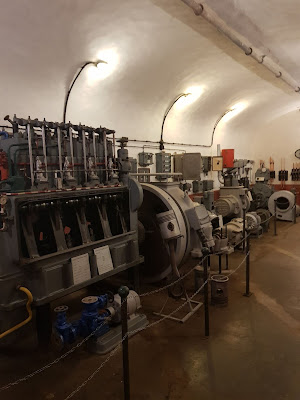




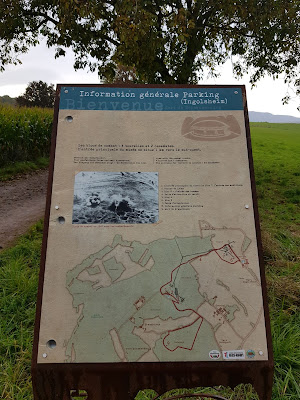





















































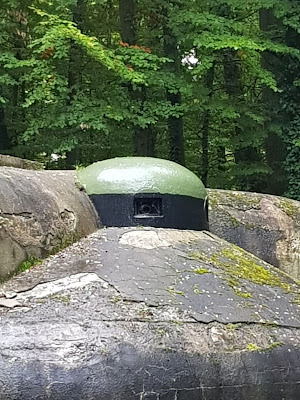












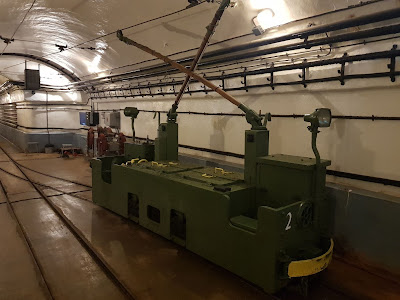
















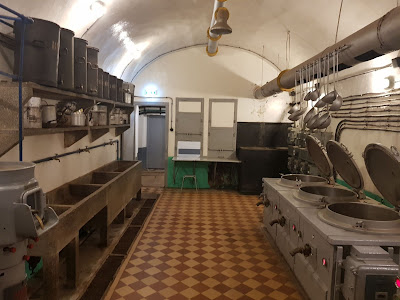





























































































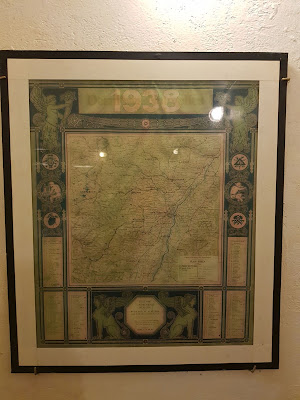





















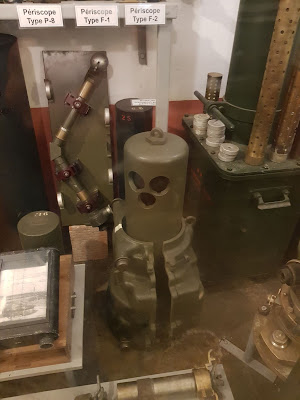






































Keine Kommentare:
Kommentar veröffentlichen